
Stephen Ray Vaughan was an American musician, best known as the guitarist and frontman of the blues rock trio Stevie Ray Vaughan and Double Trouble. Although his mainstream career spanned only seven years, he is regarded as one of the most influential musicians in the history of blues music, and one of the greatest guitarists of all time. He was the younger brother of guitarist Jimmie Vaughan.

The Fabulous Thunderbirds is an American blues band formed in 1974. Singer Kim Wilson is the only constant member through the band's entire history. Their 1986 album Tuff Enuff sold over a million copies, and spawned two minor hit singles: the title track and "Wrap It Up".

Texas Flood is the debut studio album by the American blues rock band Stevie Ray Vaughan and Double Trouble, released on June 13, 1983, by Epic Records. The album was named after a cover song featured on the album, "Texas Flood", which was first recorded by blues singer Larry Davis in 1958. Produced by the band and recording engineer Richard Mullen, Texas Flood was recorded in the space of three days at Jackson Browne's personal recording studio in Los Angeles. Vaughan wrote six of the album's ten tracks.
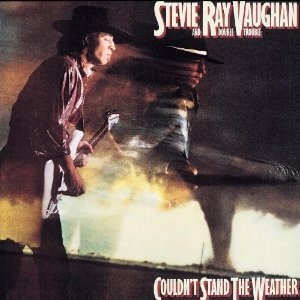
Couldn't Stand the Weather is the second studio album by American blues rock band Stevie Ray Vaughan and Double Trouble. It was released on May 15, 1984, by Epic Records as the follow-up to the band's critically and commercially successful 1983 album, Texas Flood. Recording sessions took place in January 1984 at the Power Station in New York City.

Jimmie Lawrence Vaughan Jr. is an American blues rock guitarist and singer based in Austin, Texas. He is the older brother of the late Texas blues guitarist Stevie Ray Vaughan.
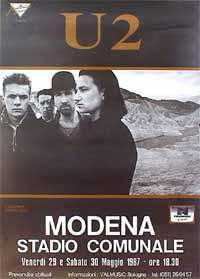
The Joshua Tree Tour was a concert tour by Irish rock band U2. Staged in support of their 1987 album The Joshua Tree, it comprised 109 shows over three legs, spanning from April to December that year. The first and third legs visited North America, while the second leg toured Europe. While it reflects previous tours in minimal production, the Joshua Tree Tour was the first to involve larger venues in arenas and stadiums as a result of the album's breakthrough. Like the themes of its parent album, the tour has the group exploring social and political concerns, along with American roots and mythology, collaborating with American guest musicians and opening acts such as B. B. King. U2 also recorded new material; these songs and the band's experiences on tour were depicted on the 1988 album and documentary film Rattle and Hum and on the 2007 video and live album Live from Paris. Territories that this tour missed would later be covered by Rattle and Hum's Lovetown Tour.

Double Trouble is an American blues rock band from Austin, Texas, which served as the backing band for singer-guitarist Stevie Ray Vaughan. The group was active throughout the 1980s and contributed to reviving blues music, inspiring many later blues and rock acts. Formed in Austin, Texas in 1978, the group went through several early line-up changes before settling on a power trio consisting of Vaughan, Chris Layton (drums), Tommy Shannon (bass). They became a four-piece by 1985 after adding Reese Wynans (keyboards). Whilst with Vaughan they were billed Stevie Ray Vaughan and Double Trouble. Rooted in blues and rock music, the group worked in various genres ranging from ballads to soul, often incorporating jazz and other musical elements.
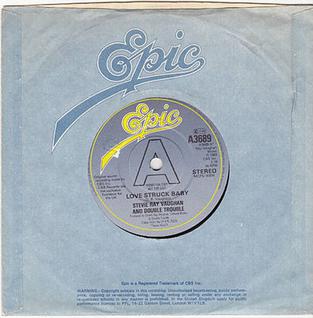
"Love Struck Baby" is a blues rock song performed by Stevie Ray Vaughan and Double Trouble. Vaughan wrote the song about the night that he moved in with his then-wife, Lenny. The track was produced by Vaughan for the band's debut album Texas Flood, recorded in Los Angeles. "Love Struck Baby" was the first single from Texas Flood, released by Epic Records in the United States and United Kingdom. In the song's accompanying music video, bassist Tommy Shannon and drummer Chris Layton are shown relaxing at a bar before Vaughan enters and starts performing the song for a crowd. "Love Struck Baby" was a concert favorite for fans of the band; Vaughan would frequently play the guitar behind his head for part of the solo.

Lou Ann Barton is an American blues singer based in Austin, Texas since the 1970s. AllMusic noted that "The grace, poise, and confidence she projects on-stage is part of a long tradition for women blues singers".
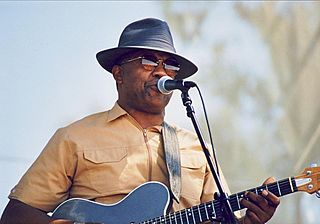
Wesley Curley Clark was an American blues musician. He is known as the "Godfather of Austin Blues" for his influence on the Austin, Texas blues scene since the late 1960s.

The Texas Flood World Tour was a concert tour in North America and Western Europe, undertaken by American blues rock band Stevie Ray Vaughan and Double Trouble in 1983 and 1984. The band had released their debut album, Texas Flood, a week before the tour began.
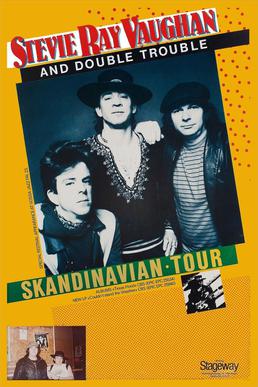
The Couldn't Stand the Weather Tour was a worldwide concert tour by blues rock band Stevie Ray Vaughan and Double Trouble. Produced in support of their 1984 album Couldn't Stand the Weather, the tour visited North America, Europe, Australasia and Japan from 1984 to 1985. To reflect the new musical direction that the group took with Couldn't Stand the Weather, the tour was aimed to differ from their past and surpass expectations of the band. In comparison to Vaughan and Double Trouble's modest stage setup from the previous Texas Flood Tour, the Couldn't Stand the Weather Tour involved a slightly more elaborate production. It utilized grander amplifier setups and sound systems to take advantage of the larger venues in which they performed. To avoid their renowned strictly blues material, Vaughan and Double Trouble embodied a more expanded and varied repertoire during performances. In disparity to the previous tour, each of the Couldn't Stand the Weather shows opened with mostly the same three songs before other material was played. The album and the tour were the beginnings of the group's mid-eighties musical development.
The Soul to Soul Tour was a concert tour through North America, Europe and Australasia, undertaken by American blues rock band Stevie Ray Vaughan and Double Trouble from 1985 through 1986. At the beginning of the tour, the band had finished recording their album Soul to Soul. Their commercial and critical acclaim had been demonstrated during the Couldn't Stand the Weather Tour in 1984, when they had played before a sold-out audience at Carnegie Hall. Longing for opportunities to expand the group's lineup, Vaughan and Double Trouble hired keyboardist Reese Wynans during the Soul to Soul recording sessions in Dallas, Texas. Throughout the tour, the band's success was confirmed as their performances consistently amazed and gratified their audiences.

The In Step Tour was a concert tour through the United States and Canada, undertaken by American blues rock band Stevie Ray Vaughan and Double Trouble from 1989 to 1990. Launched in support of their fourth and final studio album In Step, this was the third tour to include keyboardist Reese Wynans, who joined the band in 1985. Stevie Ray Vaughan and Double Trouble achieved international fame when their debut album, Texas Flood, was released in June 1983. Throughout their subsequent concert tours, the group's success was confirmed as their performances consistently amazed and gratified their audiences. Similar to their previous tours, the In Step Tour was a minimalist production. The stage featured a simple light show that changed according to the mood of certain songs performed. Although Vaughan and Double Trouble never followed a set list, all ten songs from In Step were played at least once during the tour, and as many as seven of them were included in each of the band's performances.

Stevie Ray Vaughan was an American blues rock guitarist, singer, and songwriter, and the frontman for the band Double Trouble. He is often regarded as one of the greatest guitarists and blues musicians of all time. During his career, he released four studio albums, one live album, and several singles.

The Fire Meets the Fury Tour is a 1989 concert tour co-headlined by Stevie Ray Vaughan and Jeff Beck. Epic Records paired the two guitarists together for a 29-day concert tour starting in Minneapolis, Minnesota. This tour was the third leg of the Stevie Ray Vaughan and Double Trouble In Step Tour. In addition to being one of the highest-grossing concert tours of 1989, The Fire Meets the Fury Tour won the Pollstar magazine award for most creative tour package of the year.

In the early morning of Monday, August 27, 1990, American musician Stevie Ray Vaughan was killed in a helicopter crash near East Troy, Wisconsin, at age 35. He was one of the most influential blues guitarists of the 1980s, described by the Rock and Roll Hall of Fame as "the second coming of the blues".

Christopher Layton, also known as "Whipper", is an American drummer who rose to fame as one of the founding members of Double Trouble, a blues rock band led by Stevie Ray Vaughan.

Bill Carter is an American singer, songwriter, musician, and member of the Austin Music Hall of Fame. He is best known for co-writing "Crossfire" and "Willie The Wimp", recorded by Stevie Ray Vaughan; "Why Get Up?", recorded by The Fabulous Thunderbirds; and "Jacksboro Highway", recorded by John Mayall. Carter's songs have been covered by other blues, country, and rock artists including Waylon Jennings, Robert Palmer, Ruth Brown, Stray Cats, and Counting Crows.

















